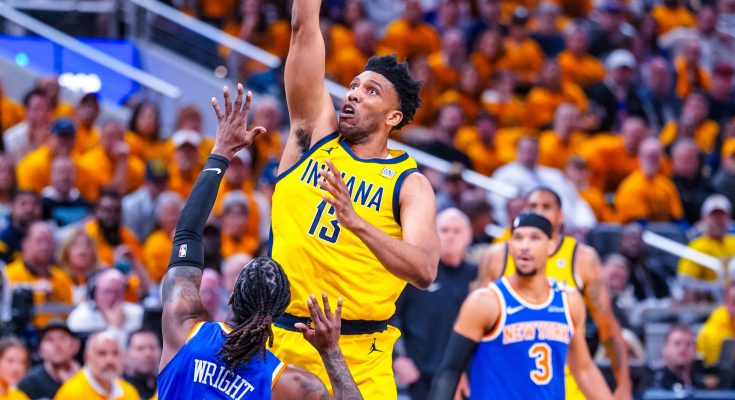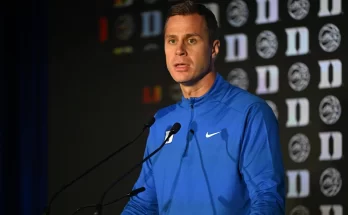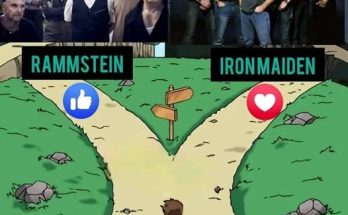The Pacers opted to go with Bradley for a number of reasons, including his years of NBA experience and his team-first mentality, but especially because one of his strengths matched one of Indiana’s biggest needs: rebounding. In basketball, rebounding is often overlooked in favor of scoring and flashy plays, but it remains one of the most crucial aspects of the game. For Indiana, a team that has been trying to establish itself as a consistent force in the Eastern Conference, the lack of rebounding presence had been an issue that surfaced repeatedly over the course of several seasons. Bradley, with his skill set, experience, and willingness to do the dirty work, became the kind of player that made sense to bring in, not just for what he could do individually but also for how his presence could stabilize areas where the Pacers were falling short.
Rebounding is as much about effort and positioning as it is about athleticism, and Bradley has shown throughout his career that he has both the IQ and the motor to consistently impact the glass. The Pacers had been in situations where games slipped away because they failed to secure defensive rebounds, giving opponents multiple second-chance opportunities. Those possessions add up, and in a league where margins are slim and games are often decided in the final minutes, losing the rebounding battle can be the difference between winning and losing. For Indiana, the decision to bring in Bradley was rooted in the understanding that they needed someone who could clean up the boards, provide extra possessions, and help close out defensive sequences effectively.
Bradley also brought with him years of experience that extended beyond just statistics. In the NBA, players who have been around the league long enough understand how to fit into different systems and adapt to new roles. That’s something younger players often struggle with, and it can take years to master. Bradley’s ability to bring a professional approach, show up every day, and perform his role without ego or demands for the spotlight made him an attractive addition to the Pacers’ roster. His reputation as a team-first player who values winning above personal accolades aligned well with what Indiana has been trying to build under its current leadership.
The Pacers, like many mid-market franchises, face unique challenges when it comes to roster construction. They aren’t always in play for the league’s biggest free agents, and they need to maximize value in every move they make. This often means identifying specific needs and targeting players who can address them. In this case, rebounding was at the top of the list. The Pacers had shown offensive firepower in recent seasons with players capable of scoring in bunches, but they often struggled in physical battles in the paint. Bradley’s addition, while not flashy or headline-grabbing, was a calculated decision aimed at addressing a structural weakness that had plagued the team in crucial moments.
Another element in Indiana’s decision was the leadership component. For a team filled with young talent looking to carve out their identities in the league, having a veteran presence like Bradley matters. Younger players often benefit from watching and learning from someone who has been through the ups and downs of the NBA. Bradley’s career has included different roles, different teams, and different expectations, and those experiences give him a unique perspective to share with teammates. His ability to communicate, lead by example, and encourage younger players to embrace roles that might not always be glamorous is something that can influence the culture of the team as a whole.
From a strategic standpoint, Bradley’s rebounding provides Indiana with flexibility. With him on the floor, the Pacers can allow their guards and wings to push the pace without worrying as much about being punished on the glass. Rebounding isn’t just about securing the ball; it also sparks fast breaks and transition opportunities. A defensive rebound quickly turned into an outlet pass can be the first step toward easy points on the other end. In a league where pace and space dominate, those extra possessions can tilt momentum and wear down opponents.
The Pacers also considered the broader fit when deciding on Bradley. His willingness to do the dirty work makes him the type of player who can mesh with stars and role players alike. Teams often falter when too many players are competing for touches, shots, or attention. Bradley isn’t that type of player. He doesn’t need plays drawn up for him. He doesn’t demand the spotlight. Instead, he thrives on effort, energy, and physicality. For Indiana, adding someone who brings production without disrupting chemistry was a win in itself.
There’s also a defensive ripple effect that comes with rebounding. Securing boards allows teams to reset and stay composed. Without rebounding, even great defensive possessions can feel wasted. Indiana has emphasized defense as part of its identity, and Bradley helps reinforce that commitment by completing plays. A stop isn’t truly a stop until the ball is secured, and Bradley’s presence raises the team’s ability to finish those sequences.
Critics may argue that rebounding alone doesn’t solve all of Indiana’s problems, and they would be right. The NBA is complex, and winning consistently requires excellence across multiple dimensions: shooting, playmaking, defense, and depth. However, shoring up rebounding is a foundational move. Think of it as plugging a leak in a ship. Even if the vessel has strong sails and a skilled crew, a persistent leak will eventually cause problems. The Pacers saw rebounding as that leak, and Bradley as one of the patches necessary to keep moving forward.
In addition, Bradley’s durability and consistency appealed to Indiana. Availability has been an issue for the Pacers in recent seasons, with injuries disrupting continuity and momentum. Bradley may not play 40 minutes a night, but his ability to consistently contribute when called upon provides a level of reliability that coaches value. Knowing that they can count on him to bring energy, secure rebounds, and provide physicality helps stabilize rotations and game plans.
The mental side of basketball also plays a role in why Indiana valued Bradley. Confidence builds when teams know they can rely on certain aspects of their game. If players know that their rebounding will hold up, it frees them to focus on other areas without pressing. That sense of security can reduce mistakes, allow players to stay calm in pressure moments, and ultimately improve execution.
Furthermore, Bradley’s arrival symbolizes something about how the Pacers approach team building. They prioritize fit and need over splashy moves. It’s not always about making headlines but about constructing a roster that works together. Bradley may never lead the team in scoring or earn national recognition, but his role could be just as vital in shaping how Indiana competes. Championships are not won by stars alone; they are won by teams that function as a unit, with each player embracing his role. Bradley’s role is clear, and that clarity benefits everyone.
There’s also an element of accountability that a player like Bradley can instill. Rebounding, by nature, is about effort. It’s about fighting for position, boxing out, and refusing to give up on plays. When younger players see a veteran willing to battle night in and night out, it sets a standard. It sends a message that no task is beneath anyone if it contributes to winning. That kind of standard becomes contagious and can elevate the team as a whole.
Over the course of an NBA season, teams face highs and lows. They deal with losing streaks, injuries, and difficult road trips. Having players who can ground the team during those moments matters. Bradley’s steady presence can serve as that anchor. He’s not easily rattled, and he understands the grind of an 82-game season. His value extends beyond the stat sheet to the locker room and the huddle, where his voice and demeanor can keep things in perspective.
For Indiana fans, the move to bring in Bradley may not have been the most exciting on paper, but it’s the type of addition that makes a difference over time. Winning teams are built with layers, and while stars carry the load, role players like Bradley fill in the gaps that would otherwise become weaknesses. Every rebound he secures, every hustle play he makes, and every bit of energy he injects into the game adds up across the season.
The Pacers’ decision reflects an understanding of where they are as a franchise. They are not rebuilding from scratch, nor are they at the very top of the league. They are in that middle tier, striving to take the next step. To do so, they need to maximize every possession, every role, and every opportunity. Bradley fits into that vision because he gives them an edge in one of the most fundamental parts of basketball.
Ultimately, the choice to add Bradley wasn’t just about numbers or short-term fixes. It was about identity. The Pacers want to be known as a team that plays hard, competes every night, and refuses to back down physically. Bradley embodies those qualities. He brings toughness, experience, and rebounding—all things that Indiana desperately needed. The move may not dominate headlines, but in the long run, it could help the Pacers establish the consistency they’ve been chasing.
As the season unfolds, the impact of Bradley’s presence will become clearer. He may not always draw attention, but his influence will be felt in the little things—the rebounds that prevent second-chance points, the box-outs that free up teammates, the steady hands that bring stability. Basketball is a game of details, and the Pacers believe Bradley is the type of player who makes sure those details are handled. By addressing one of their biggest weaknesses with one of his greatest strengths, Indiana positioned itself to be more competitive and more complete. And in a league where every edge matters, that decision could prove invaluable.



